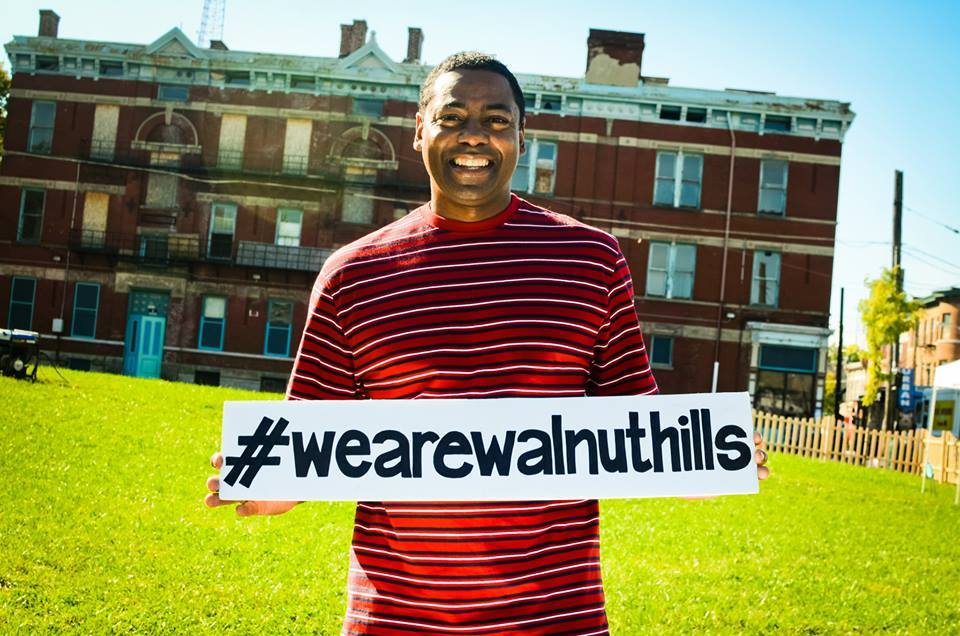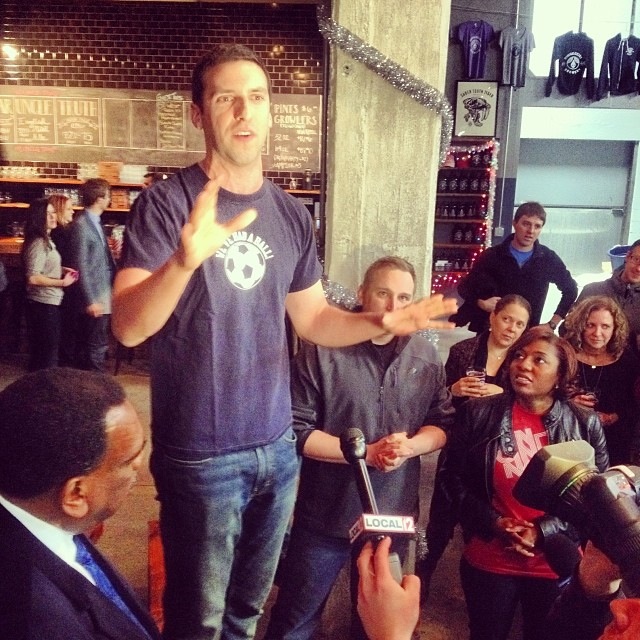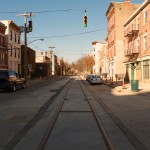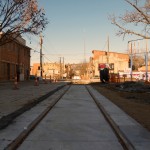The final, final, final vote for the first phase of the Cincinnati Streetcar took place today. Perhaps by now you all know the outcome. A six-person veto-proof super-majority voted to continue construction. Cincinnati, as Mayor John Cranley (D) said today, will have a streetcar.
What is important in this moment is to realize that everyone involved lived up to their campaign promises. Wendell Young (D), Chris Seelbach (D) and Yvette Simpson (D) stood strong in their support of the project – even in the face of uncertain outcomes.
At the same time, Christopher Smitherman (I), Amy Murray (R) and Charlie Winburn (R) held true to their promises to oppose the streetcar no matter what. They were the three lone votes against restarting construction.
Construction work will soon resume on Cincinnati’s $133M streetcar project. Photographs by Travis Estell for UrbanCincy.
Then there are the three council members who campaigned on taking a serious look at the numbers and making a prompt decision about whether to cancel the project or proceed. P.G. Sittenfeld (D), David Mann (D) and Kevin Flynn (C) all did that once they saw the numbers in detail. Cancelling a project this far along would have been fiscally irresponsible, and they voted true to their campaign promises to be good stewards of the taxpayer’s dollars.
UrbanCincy has been covering this project since we started the website back in 2007. Our original coverage focused on redevelopment efforts in Downtown and then Over-the-Rhine, but the streetcar quickly became a big part of that redevelopment narrative. It is no secret that we are strong supporters of the project and believe it will improve mobility in the center city and set the city on a path toward building the regional rail system everyone seems to now desire.
There are many people responsible for getting Cincinnati to this stage, but the biggest credit must absolutely be given to John Schneider. If it were not for his unrelenting leadership on this issue over the past decade, we would not be anywhere close to where we are now.
The emergence of Mayor Mark Mallory (D) then gave the city a prominent leader to push the project forward, and Mallory leaned on the expertise and leadership of former City Manager Milton Dohoney and Vice Mayor Roxanne Qualls (D) to get it all done.
It is important to keep in mind that the person who first pushed for the Uptown extension to be included in phase one was in fact Roxanne Qualls. The Uptown Connector was never part of the original phase one plan, but was added in later as “Phase 1b” at the urging of Qualls, who then worked with Mallory and then Governor Ted Strickland (D) to secure state funding to make that happen.
Hard fought victories in 2009 and 2011 helped keep the project alive, but also delayed it and ran up the project’s costs. Those delays also allowed enough time for Governor John Kasich (R) to assume office and pull the $52 million in state funding Ohio had originally pledged.
So while Qualls’ leadership and vision to have the first phase include the Uptown Connector is not being realized at this exact moment, our attention must now turn to extending the streetcar line to neighborhoods in Uptown as quickly as possible.

The first phase of the Cincinnati Streetcar system is a small part of a much larger regional rail plan envisioned by leaders. Map provided by OKI Regional Council of Governments.
A new wave of leaders and organizers has emerged in Cincinnati as a result of this most recent battle over the streetcar project. This includes the heroic efforts of Eric Avner and the Haile/U.S. Bank Foundation for drumming up private support to contribute $9 million toward the project’s ongoing operations.
Their hard work and courage should certainly be commended, but let’s also not forget the people who have been pounding the pavement on behalf of the streetcar since the beginning. Most Cincinnatians in 2007 did not know what a streetcar was, much less a modern one and the benefits it would bring. The hard work put in by those people early on was necessary.
This movement was not built overnight and these supporters are not fair-weather fans of the city. The movement has grown in size and grown more sophisticated over the past decade and is now stronger than ever.
You too can join this urbanist movement in Cincinnati.
We gather at the Moerlein Lager House around the first Thursday of every month to host URBANexchange – an urbanist networking and social event. We also partner with the Niehoff Urban Studio at the University of Cincinnati to study complex issues facing our city and engage the public in that dialog. Please join us at our next URBANexchange and pay us a visit in Corryville for our next event with the Niehoff Urban Studio.
Now is a time to celebrate and reflect. But it is not the time to get complacent. There are more issues to address and this energy that saved the streetcar needs to be redirected there. Congratulations, Cincinnati! Let’s get to work.




